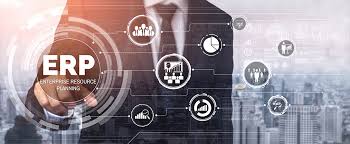
Erp Service
"Transform Your Operations with Comprehensive ERP Services" Streamline workflows, optimize resources, and drive growth with tailored ERP solutions.
Business Problem
ERP (Enterprise Resource Planning) systems are designed to streamline and integrate various business processes. However, their effectiveness depends on how well they align with the specific challenges a company faces. Multiple, disconnected systems lead to data duplication and inconsistencies. Inability to handle increased business volume or complexity. Delays, errors, and lack of visibility in the order fulfillment process. Excessive administrative and operational expenses.

Our Approach
UI/UX Design

E-commerce Functionality Integration

Website & Security Testing


Website Launch & Customer Support
How We Worked On It:
Approach 1 : Understanding the Business Problem:
Understanding the Business Problem:
- Core business processes:
How does your organization function on a day-to-day basis? - Pain points:
Where are the inefficiencies or bottlenecks in your current operations? - Future goals:
What are your aspirations for growth and expansion?
Approach 2 : Tailored ERP Solutions:
Tailored ERP Solutions:
- Needs assessment:
Identifying the specific ERP features and functionalities that will address your challenges. - Solution selection:
Evaluating and recommending the most suitable ERP system based on your requirements, budget, and scalability. - Implementation planning:
Creating a detailed project plan outlining the implementation timeline, resources, and key milestones.
Approach 3 : Data Migration and Integration:
Data Migration and Integration:
- Data migration:
Safely and efficiently transferring your data from legacy systems to the new ERP. - System integration:
Ensuring compatibility and interoperability between your ERP and other applications.
Approach 4 : Training and Support:
Training and Support:
- User training:
Helping your employees understand and effectively use the ERP system. - Ongoing support:
Providing technical assistance and troubleshooting when needed. - Continuous improvement:
Assisting with process optimization and system enhancements.








